MBBS in China is a popular international educational choice. Students from across the world and especially India flock to study in reputed universities in China. MBBS in China is a dream come true for many students. The renowned universities in China offer top-grade medical education to deserving candidates. You can turn your aspiration of pursuing medical education with our advisory. We are proud to provide you with effective counseling on an international medical career. To apply for the MBBS course in China, the aspirants will have to secure at least 70% in PCB. Else, the candidates must score 200 in NEET. MBBS courses in China are pocket-friendly, so students can easily afford the fee. The aspirants may have to bear an annual cost of $4000 to $5000 to study medicine in China's top medical universities. Further more, the medical colleges in China are recognized by WHO and NMC. Several global medical councils and NMC approve more than 25 medical universities in China. Once the degree is complete, the Indian students will have to clear the NMC exit- test to start practicing in India as a doctor. If you are eager to study medicine at a foreign university, apply for MBBS courses in China. The benefits of studying MBBS in China are many.
We cooperate with the best Universities/College's around the Globe. Choose your top University/College and get Admission!
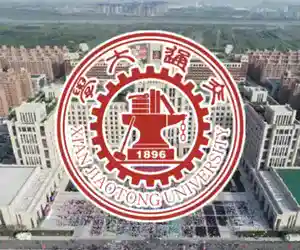
Xi'an Jiaotong University (XJTU) is a key university under the direct administration of the Ministry of Education of the People's Republic of China and is one of China's oldest universities.
China's last feudal government failed in the Sino-Japanese War of 1894-1895, plunging the entire nation into crisis. During those chaotic times, Sheng Xuanhuai, a famous industrialist and educator, established Shanghai-based Nanyang College in 1896 with the purpose of "promoting education for talents' development to realize the nation's rejuvenation".
In 1921, the college changed its name to Jiaotong University. By adhering to the mission of "learning practical skills, developing industries", the university stressed the pursuit of "a first-class code of conduct, first-class learning, first-class achievements, and first-class talent cultivation".
By the 1920s-1930s, it had developed into a university with "science, engineering and management" as distinctive disciplines and was known as the "oriental MIT".
During the War of Resistance Against Japanese Aggression (1931-45), one section of the university moved to Shanghai's foreign settlements. Another section moved to Chongqing to continue education. To resist aggression, many students discontinued their studies and joined the military.
Before the People's Republic of China was founded in 1949, students and teachers engaged in the revolution to establish an independent nation.
In 1956, the main part of Jiaotong University was relocated to Xi'an pursuant to a State Council decision, and was officially renamed Xi'an Jiaotong University in 1959. In the same year, it was listed as one of the 16 key universities in China. In 2000, with approval of the State Council, the former Xi'an Medical University and former Shaanxi Institute of Finance and Economics were merged with Xi'an Jiaotong University (XJTU).
During the 7th and 8th Five-Year Plan periods (1986-95), XJTU was supported by the central government as one of the key universities in China, and was one of the first schools selected to China's "211" and "985" projects.
Xi'an Jiaotong University was on the list of universities that would be developed into world-class educational institutions released by the Ministry of Education in 2017, as a Double First-Class university in Category A. This means that government support will target developing XJTU into a world-class university, and its eight disciplines will be advanced to the international level.
Currently, XJTU is a comprehensive research university with nine major categories of disciplines: Science, Engineering, Medicine, Economics, Management, Humanities, Law, Philosophy and Art, of which Science and Engineering are its highlights. XJTU has 27 schools (departments/centers), nine colleges for undergraduates, and three affiliated hospitals.
XJTU has 6,538 faculty and staff, including 3,729 full-time teachers. There are 44 members of the Chinese Academy of Sciences and the Chinese Academy of Engineering, six nationally distinguished teachers, 42 recipients of the National Science Fund for Distinguished Young Scholars, 25 national experts with outstanding contributions, 30 scholars listed in the “National Hundred, Thousand and Ten Thousand Talents Program” and the “New Century National Hundred, Thousand, and Ten Thousand Talents Program”, 29 scholars who have won support as “Innovation Team leaders”, 234 scholars supported by the “Program for New Century Excellent Talents” administered by the Ministry of Education, and 491 experts who have made outstanding contributions to the nation and receive the State Council Special Allowance.
XJTU now has 44,325 full-time students, including 20,958 undergraduates, 21,383 postgraduates, and 1,984 international students. The university offers 90 undergraduate majors. These include 32 first-level disciplines authorized to confer doctorate degrees, 41 first-level disciplines authorized to confer master's degrees, five disciplines authorized to confer professional doctorate degrees, and 27 disciplines authorized to confer professional master's degrees.
The university has 30 post-doctoral research stations, eight state-level key first-level disciplines, five national key laboratories, seven national engineering technology research centers, three national engineering laboratories, five international science & technology cooperation bases, one collaborative innovation center (2011), and 148 key research facilities at the provincial and ministerial level.
XJTU is also home to the Western China Energy Research Institute and the Western China Institute of Quality Science and Technology.
According to data released by Essential Science Indicators (ESI) in November 2020, 15 XJTU disciplines are ranked at the top among international academic institutions, three disciplines are ranked number one among 1,000 comparable programs and the engineering discipline is ranked number one among 10,000 competing disciplines.
During its more than 120-year history, Xi'an Jiaotong University has championed the principles of developing education to make China strong, pioneering with painstaking efforts, advocating virtues and pragmatism, seeking meticulous scholarship, and pursuing excellence.
It has developed such fine traditions as loving the country and the university, seeking truth, working steadily and conscientiously, hard work, and plain-living. It has formed management characteristics based on a high starting point, aiming to create a more solid foundation, stricter requirements, and more emphasis on practice.
XJTU's outstanding alumni include Zhang Yuanji, Cai Yuanpei, Cai E, Huang Yanpei, Zou Taofen, Lu Dingyi, Qian Xuesen, Zhang Guangdou, Wu Wenjun, Jiang Zemin, Huang Xuhua, and Hou Zonglian.
Since relocation to Xi'an in 1956, XJTU has cultivated 42 academicians of the Chinese Academy of Sciences and the Chinese Academy of Engineering, including Lin Zonghu, Cai Ruixian, Cao Chunxiao, Jiang Xinsong, Li Helin, Ye Shangfu, Li Peicheng, Yao Mu, Chen Guoliang, Lei Qingquan, Xiong Youlun, Tu Mingjing, Li Bohu, Su Junhong, Sun Jiulin, Chen Guilin, Cheng Shijie, Sun Caixin, Han Qide, Tan Tieniu, Cong Bin, Hao Yue, Chen Zhengqing, Jiang Song, Fang Jiancheng, Wang Huaming, Tang Guangfu, Guo Wanlin, Wu Yican, Luo Qi, and Yan Xinping.
Overseas academicians include members of the US National Academy of Engineering and the US National Academy of Science and the Canadian Academy of Engineering, represented by Gao Huajian, Suo Zhigang, Jiang Jing, Liu Yilu, Liang Ping, and Chen Zhangxing.
Since 1956, XJTU has graduated 280,000 well-regarded students, including numerous famous XJTU alumni who have provided important intellectual support for western China's development.
These alumni include Yang Jiachi, Chen Huibo, Wen Xisen, Xiao Shengli, Ma Dexiu, Lei Jufang, Cui Dianguo, Sun Laiyan, Zhang Guobao, Jia Quanxi, Wang Jue, Lian Weiliang, Wen Shugang, Wang Jianping, Xin Bao'an, Jiang Xiaojuan, Pu Zhongjie, Yu Jie, He Jinbi, Zhang Yue'e, Gui Shengyue, Lu Lei, Zhang Yalin, Zhao Huan, Qiu Jianping, Liang Haishan, Feng Xingya, Zhou Hongyi, Chen Xi, Liu Guangbin, Zheng Haitao, Lu Yiming, Fan Deng, Liu Liehong, Zhang Dongchen, Wang Dongfeng, Liu Qi, Guo Wenjun, Jing Haipeng, Chen Dong, Xue Ying, and Zhang Xin.XJTU has fully implemented "cultivation in conduct, impartation of knowledge, training abilities, and innovation in thinking" in the cultivation of talents and established the system of "general education + professional education with wide-ranging knowledge" and a well-rounded "Undergraduate - Postgraduate - Doctoral Students" education system.
In 2006, XJTU took the lead among Chinese universities in creating a system of university colleges modeled on the traditional Chinese academy of learning. This twin-college system aims to give students the best possible opportunities for success.
In 2017, XJTU set up the Undergraduate School to carry the three-level administrative mode of "University - School - Department", and established a management system for undergraduate talent training of "collaboration, connection, coordination between teaching and educating."
Since 1985, based on the Qian Xuesen Honors College, XJTU has applied Qian Xuesen's spirit and wisdom in teaching practice to explore new mechanisms for cultivating innovative talents. It has also established top talent training trial classes, including the "Exceptionally Gifted Juvenile Class", "Qian Xuesen Pilot Class", "Hou Zonglian Pilot Class", "Pilot Classes for Talents of Basic Subject", and the "AI Pilot Class".
XJTU has received endorsements from students and parents for its unique educational model, favorable study environment, excellent teachers and substantial teaching resources, as well as positive teaching results.
To date, XJTU has won 78 national-level awards for teaching excellence, upgraded 35 courses to national-level quality , 23 courses to national-level quality for -resource-sharing , 13 national-level video open courses, 50 national-level first-class online courses, seven national-level first-class online & offline combined courses, nine national-level offline courses, 10 national-level first-class virtual simulation experiment teaching courses, and two national-level first-class social practice courses.
XJTU also has eight national-level teaching (education) bases, 12 national-level experimental teaching demonstration centers (including the virtual simulation experiment teaching center), nine national-level teaching teams, and one national-level teachers development center.
To date, 27 XJTU student dissertations have been included in "China's 100 best doctoral dissertations" and another 46 have been nominated for that award.
XJTU science and technology research is primarily focused on meeting the country's most important needs, forging into international frontiers, and enhancing China's technological competitiveness.
Since westward relocation, XJTU has been dedicated to taking the lead in scientific research and has achieved several "firsts" in certain fields at home and abroad, including the establishment of the first Institute of Engineering Thermophysics of China, the first university established majors of Steam Turbines, Automobile Manufacture, Refrigeration and Cryogenic Technology and Displacement Compressors, the invention of the first large All Purpose Electronic Computer and the first digital processor chip of China, and institutional affiliation of researchers who first proposed the twin-shear unified strength theory with proprietary intellectual property rights.
Since its relocation, 241 of XJTU's more than 30,000 research achievements have won National Natural Science Awards, National Technological Innovation Awards, and a National Prize for Progress in Science and Technology, greatly benefitting society.
XJTU relies on its strength in key disciplines and its unique educational model that emphasizes the integration of production, study, and research. Along with government cooperation and with large and mid-sized enterprises, XJTU has established research and development parks that aim to help solve key technological problems facing industries and strengthen science and technology contributions to the regional economy and local social development.
Since 2000, XJTU researchers have led 21 research projects supported by "Program 973" and 5,343 research projects supported by China's National Natural Science Foundation. The total number of XJTU basic research projects and grants rank among the top Chinese universities.
Researchers from XJTU have undertaken 37 major projects supported by the National Social Science Foundation and have won 36 Excellent Research Achievement Awards (Humanities and Social Sciences) from the Ministry of Education. Seventeen high-end think tanks have been established in collaboration with the National Development and Reform Commission and the Ministry of Commerce, which produced a large number of research results.
XJTU advocates "patriotism, collectivism, heroism, and optimism" — a mission culture focused on giving service to the country, pursuing excellence, pioneering innovation, and blazing new trails and a culture that works in teams and collaborates.
XJTU has a national-level base for cultural education and boasts 174 student organizations. It sponsors a rich and varied set of activities in science and technology, literature and the arts, and sports.
"Experts' Talks", "Talking Freely about the World", "Siyuan Lectures", "Learning Forum", "iHarbour Lectures", and the "Chuang Yuan Forum" have become well-known events that provide the opportunity for students and staff to expand their fields of vision.
In recent years, XJTU students have won awards in a wide range of competitions, including SAE Aero Design Competition, VEX Robotics Competition, International Mathematical Contest in Modeling, the World Mandarin Debating Championship, International English Speech Contest, the World Architecture Design Competition for University Students, Asian Area Selection Match for ACM International Collegiate Programming Contest, China College Students' "Internet plus" Innovation and Entrepreneurship Competition, "Challenge Cup" National University Student Extracurricular Academic Science and Technology Work Competition, "Create in the Youth Years" China College Students' Entrepreneurship Competition, Contemporary Undergraduate Mathematical Contest in Modeling, National College Mechanical Innovation Competition, China University Robot Competition (Robocon), China Undergraduate Physics Tournament, National Aviation and Space Model (research- type) Tournament, and National University Student Social Practice and Science Contest on Energy Saving & Emission Reduction.
Xi'an Jiaotong University has established extensive international ties. Since 2000, 25 winners of the Nobel Prize and the Fields Prize and over 2,000 foreign professors have visited XJTU and given lectures.
XJTU also has exchanged or established cooperation relations with over 20,000 scholars, CEOs, and high-level government officials worldwide or developed other collaborative projects.
More than 28,000 XJTU teachers and students have gone abroad to visit, study, do research or participate in degree programs, and over 2,000 faculty members and researchers have traveled abroad for conferences.
XJTU has had relations and exchanges with 320 universities and research institutions in 44 countries and regions, including the United States, Japan, the United Kingdom, France, Germany, Italy, New Zealand, and Korea.
In 2019, there were some 3,000 international students from over 141 countries studying at XJTU.
Xi'an Jiaotong University has four campuses: the Xingqing campus, the Yanta campus, the Qujiang campus, and the Western China Science & Technology Innovation Harbour (iHarbour), covering a total area of about 4.48 million square meters and a total construction area of 4 million square meters.
The "Qian Xuesen Library," named after alumnus Qian Xuesen as authorized by the CPC Publicity Department, is located on the Xingqing campus. It encompasses nearly 44 thousand square meters and has 3,604 reading seats.
The library collections include 5.76 million books and over 10,000 newspapers and periodicals, and over 1,300 of them are current periodicals. The library has also been improving its digital collections and has introduced electronic resources from 132 platforms. Its holdings now include 59,000 electronic periodicals and 1.76 million e-books in Chinese and foreign languages.
The Western China Science &Technology Innovation Harbour (iHarbour), aiming to "contribute to national missions, establish a world science and education highland, serve the development of Shaanxi Province, become an innovation-driven platform and model a wisdom uni-town", has established eight major research platforms, 29 institutes, and more than 300 scientific research bases to serve China's major scientific research, including interdisciplinary research and military and civilian integration research, as well as other types.
The iHarbour will better cultivate students' creativity, the commercialization and incubation of their scientific and technological achievements, and the development of the economy and society. It actively explores new models, forms, and experiences of the integration of modern universities and social development in the twenty-first century.
The Silk Road University Alliance, initiated by XJTU, has attracted more than 150 universities from 37 countries and regions and has created a group of high-end think tanks, such as the Collaborative Innovation Center of Pilot Reform Exploration and Assessment and the Collaborative Innovation Research Center of the Silk Road Economic Belt, that aim to serve social development and national rejuvenation and to implement the strategy of enhancing international competitiveness and promoting regional internationalization with educational internationalization.
Xi Jinping, general secretary of the Communist Party of China Central Committee, gave important instructions on December 11, 2017 in response to a letter to him from 15 professors of Xi'an Jiaotong University who had moved along with the university to Xi’an from Shanghai decades ago. Xi paid high tribute to all those who responded to the central government's call and devoted themselves to the construction of the country decades ago. He expressed the hope that the teachers and students of XJTU will inherit the "western relocation spirit" and contribute their wisdom and energy to the country.
On April 22, 2020, Xi visited an exhibition on the relocation of Jiaotong University from Shanghai to Xi'an and its development and achievements at the Jiaotong University Westward Relocation Museum. He met with the professors who had made outstanding contributions to Jiaotong University's westward relocation and made two important speeches to interpret the core concept and essence of the "western relocation spirit". Xi encouraged all XJTU teachers and students to carry on that spirit and to create opportunities in this new era to make contributions where they are most needed, and to create a historical monument of our generation.
At this new starting point of history, Xi'an Jiaotong University studies deeply and implements Xi Jinping Thought on Socialism with Chinese Characteristics for a New Era, focuses on the fundamental task of education, namely "upholding high moral values in student cultivation", insists on the orientation of "taking root in western China, giving service to the country, and striving to be world-class," pushes forward comprehensive reform, "Double First-Class" construction, and concrete development with firm confidence, heroic spirit, and great effort, and strives to write a fresh chapter of university development in the new era.
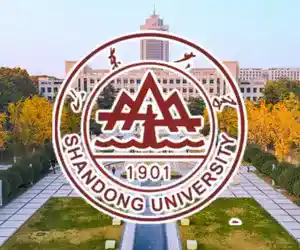
Shandong University, or SDU – under the direct jurisdiction of the Ministry of Education – is a key comprehensive university with a long and honorable history, a broad variety of disciplines, strong academic strength and distinctive characteristics, which has had a great influence both at home and abroad. In 2017, the SDU was chosen as one of the first group of China's high-level universities to be listed in the double first-class university program released by the central government of China.
Shandong University is one of the initiative universities of modern Chinese higher education. Its medical school, established in 1864, signified the beginning of modern Chinese higher education. Its main body – the Shandong Imperial College (Shandong Da Xue Tang) established in 1901 – was the second national university in China, after the Imperial University of Peking. Moreover, it was the first university in China to run in accordance with a chartered constitution.
For around 120 years, SDU has been following its mission to "nurture talent for the world and seek prosperity for the nation" and living up to its motto of being "noble in spirit, endless in knowledge". The university has cultivated over 600,000 talented young people of various specialties and has been making significant contributions to the country and to regional economic and social development.
Shandong University has developed by leaps and bounds in recent years. At present, 18 subjects have been listed in the top one percent of subjects in the Essential Science Indicators (ESI), an index showing the competitiveness of a subject published by the Institute for Scientific Information. In addition, five of the university’s subjects – chemistry, engineering, material sciences, clinical medicine, pharmacology and toxicology – were listed in the top 1‰ in the ESI rankings. SDU has also established cooperation with nearly 200 universities in more than 30 countries or regions.
Shandong University's campuses are in the cities of Jinan, Qingdao and Weihai and they cover a combined area of over 533 hectares. The university currently has four affiliated hospitals and 15 non-subordinate affiliated hospitals. Its full-time student population totals around 67,000, of whom 41,879 are full-time undergraduates, 24,319 are postgraduates, together with 1,612 international students.
The university has attracted a large number of outstanding talent, including 4,530 full-time teachers. Among these, 21 are academicians of the Chinese Academy of Sciences or the Academy of Engineering (adjunct academicians included), 40 distinguished professors of the Chang Jiang Scholars Program, 12 winners of the Youth Project, 55 awardees of the National Natural Science Funds for Distinguished Young Scholars and 42 awardees of the Excellent Young Scientists Fund.
The university boasts 12 State-level scientific research platforms, as well as six projects in the national program for introducing talent for discipline innovation in colleges and universities. It is also home to six national talent training bases, four key social science research bases approved by the Ministry of Education, 64 ministerial level platforms and a large number of provincial key laboratories and provincial engineering technology research centers.
Shandong University is a comprehensive university in China with full-fledged academic disciplines. There are at present 12 general disciplines for undergraduates and postgraduates: philosophy, economics, law, education, literature, history, science, engineering, agriculture, medicine, management and the fine arts. There are 44 first-level doctorate programs, 51 first-level master's degree programs, 95 programs for undergraduates and 42 post-doctorate research programs – forming a complete system for the cultivation of first-class talent.
The growth of the university over the years has seen SDU rise to the forefront of many fields in China. In the 1930s and 1950s, when Shandong University was located in Qingdao, it was the home of many renowned scholars who subsequently enjoyed great success, especially in the fields of literature and history. To this day, Shandong University is well-known for its strong liberal arts programs and publishes the highly reputable academic journal Literature, History & Philosophy. These two periods are widely regarded to have laid a wonderful foundation for the university in natural sciences, enabling it to position itself among the most noted institutions in China.
In August 2015, SDU staged the 22nd International Congress of Historical Sciences, reputed to be the "Olympics of Historiography". This was the first time the congress was introduced to Asian, African and Latin American countries since its establishment. Another achievement was also made in terms of the numbers of participating registered countries, historians from developing nations and young scholars.
Since its merger at the end of the last century, the university’s newly developed disciplines have all risen to the first-class level within the country and some are even known abroad. These disciplines include financial mathematics, crystal materials, condensed matter physics, colloid and surface chemistry, microbiology, reproductive medicine, cardiovascular, cerebrovascular function repair, new drug manufacturing, machinery, underground engineering and Chinese classical studies.
SDU has already set forth a grand educational objective to become a world-class university with Chinese characteristics by its 120th anniversary, with all its institutions standing at a new historic starting point. Faced with unprecedented opportunity, all faculty members, students and medical staff – in a pioneering and enterprising manner – plan to focus on the fundamental task of providing a moral education by advancing comprehensive reforms and improving the modern university system. With an already profound academic foundation and even more untapped potential, SDU is widely tipped to achieve its goal of becoming one of the world's highest-ranking universities.
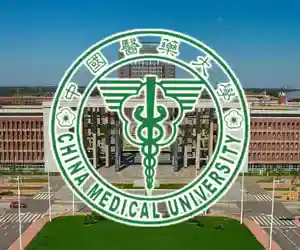
CMU was established as China Medical College (Chinese: 中國醫藥學院) on June 6, 1958 and transformed itself into China Medical University in 2003. It is the first academic institution in Taiwan where Chinese medicine and pharmacy programs are provided, and provided the first university level course in Chinese medicine in Taiwan. The university has two major campuses, Taichung and Beigang.
CMU is an integrative university which includes seven colleges where various degree programs in western medicine, Chinese medicine, pharmacy (including Chinese herbs), health care (including nursing), life sciences, public health, and management are provided.
CMU also hosts the Lifu Museum of Chinese Medicine on-campus, a 1350 square meter, three story space dedicated to the history, practice and materials of Chinese medicine, with rotating exhibitions changing twice a year.
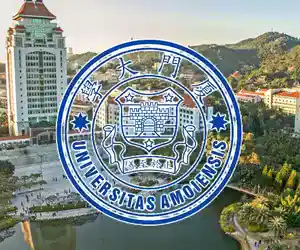
Xiamen University (XMU), established in 1921 by renowned patriotic overseas Chinese leader Mr. Tan Kah Kee, is the first university founded by an overseas Chinese in the history of modern Chinese education. XMU has long been listed among China’s leading universities on the national 211 Project, 985 Project and Double First-Class Initiative, which have been launched by the Chinese government to support selected universities in achieving world-class standing.
With a graduate school, six academic divisions consisting of 33 schools and colleges, and 16 research institutes, XMU boasts a total enrollment of nearly 44,000 full-time students with over 20,000 undergraduates, 18,000 graduate students toward a master’s degree and 5,000 doctoral candidates. XMU currently has a faculty of over 3,000 full-time teachers and researchers, of whom 32 are the members of the Chinese Academy of Sciences or of the Chinese Academy of Engineering.
XMU has forged partnerships with 259 universities in countries and regions, including the UK, the US, Japan, France, Russia, etc., as well as Hong Kong SAR, Macao SAR and Taiwan, China. It has established 15 Confucius Institutes in collaboration with universities and institutes overseas.
Established in 2014, Xiamen University Malaysia (XMUM) is the first overseas campus set up by a renowned Chinese university and the first Chinese university branch campus in Malaysia, XMUM is acclaimed as a brilliant pearl on the 21st Century Maritime Silk Road. With its first intake of students in February 2016, XMUM now has a student enrolment of over 6,000 students from 33 countries and regions.
Nestled snugly between green hills and the blue sea, XMU is renowned as China’s most beautiful university for its excellent education facilities and beautiful environment.
Forever inspired by the motto “Pursue Excellence, Strive for Perfection”, XMU has been dedicated to producing high-caliber talents with integrity, thereby making great contributions to the prosperity of the country, the great rejuvenation of the Chinese nation and the progress of mankind in general. XMU is increasingly becoming an internationally acclaimed world-class university.
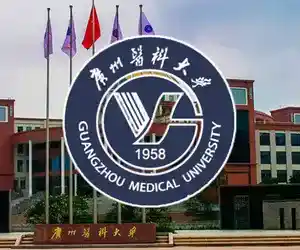
Guangzhou Medical University (GMU) was founded in 1958. It is a higher education institution based on the characteristics and strengths of its medical education. GMU offers a full range of programmes at undergraduate and graduate levels. GMU was included on the List of Double First-Class Initiative in 2022.
GMU has two main campuses. The Yuexiu campus is located in the downtown centre of Guangzhou, near Liuhua Lake Park and Yuexiu Mountain. The Panyu Campus, a new 247 acre campus, is situated in Panyu District near the Pearl River, an ideal place for learning and research.
GMU owns 25 teaching faculties, 27 research institutes, and 14 affiliated hospitals. GMU boasts one national medical centre, one national clinical medical research centre, one state key lab, 12 provincial/ministerial key labs, 5 provincial/ministerial research centres for engineering technology (engineering labs), one provincial/ministerial collaborative innovation centre, one national university science park cultivation base, and 32 municipal key laboratories.
GMU owns one national key discipline, 7 provincial /ministerial key disciplines, and 33 municipal key disciplines. Clinical medicine is enlisted in the Double First-Class Initiative. Ten disciplines enter the top 1% of ESI (Essential Science Indicators) global ranking, including Clinical Medicine, Pharmacology & Toxicology, Molecular Biology & Genetics, Biology & Biochemistry, Immunology, Neuroscience & Behavior, Microbiology, Psychiatry / Psychology, Materials Science, and Chemistry. Clinical Medicine enters top 1‰ of ESI global ranking. GMU is ranked 72nd in mainland China according the ESI comprehensive ranking.
GMU owns 24 national key clinical specialties, 94 provincial key clinical specialties. Among them, respiratory diseases ranks first, allergy ranks third , pediatric surgery ranks fourth, thoracic surgery ranks fifth, pediatric internal medicine ranks sixth, and psychiatry ranks sixth in China.
A total of 8,587 faculties are working at GMU, including recipient of Medal of the Republic, member of the Chinese Academy of Sciences, member of the Chinese Academy of Engineering, Cheungkong Scholars, recipients of National Nature Science Fund for Distinguished Young Scholars, selected candidates for New Century Talents Project, national top instructors, national experts with outstanding contribution, and the State Council Special Allowance experts. The faculty is comprised of 683 supervisors for PhD candidates and 1,339 supervisors for master students.
GMU is listed as the first batch of universities to pilot the Excellent Doctors Training Programme. We are dedicated to training health professionals with social responsibilities, excellent professional expertise, innovation and hands-on skills. GMU attaches importance to all-round development of its students. We offer 22 undergraduate programmes, covering 5 categories of disciplines including medicine, science, management, engineering and law. Among them, 17 are recognised as national first-class undergraduate programmes.
GMU has one national clinical teaching and training demonstration centre, one national modern industry college, one national virtual simulation experimental teaching centre, 2 national virtual simulation experimental projects, and one national off-campus practical teaching base for college students, one provincial virtual simulation experimental teaching demonstration centre, and 12 provincial experimental teaching demonstration centres.
GMU has one national-level teaching team and 17 provincial-level teaching teams. There are 104 excellent national-level and provincial-level courses, including 5 national first-class undergraduate courses and 63 provincial first-class undergraduate courses.
GMU owns a postdoctoral mobile station in clinical medicine. GMU is entitled to confer doctoral degrees covering 5 first-level disciplines (including 1 professional doctoral degree) as well as master degrees covering 9 first-level disciplines and 6 professional master degrees. There are more than 14,000 full-time undergraduate and graduate students. In the past five years, the overall employment rate of graduates has ranked top among medical schools and universities in the province.
From 2017 to 2021, GMU has undertaken more than 2,500 government sponsored research projects at the municipal level or above, among which the number of projects funded by the National Natural Science Foundation has been ranked top 100 in China for years. GMU won 5 national science and technology awards and more than 20 science and technology awards at provincial (ministerial) level. The University has published more than 10,000 SCI papers in world-renowned journals including Nature, Science, New England Journal of Medicine, Cell and Lancet. Two achievements were selected in list of top ten scientific and technological progress of institutions of higher Learning in China, one was listed as top ten scientific and technological news of China.
As a university with global vision, GMU has carried out extensive collaborations in research, teaching, and training with renowned universities in the United States, Canada, United Kingdom, France, the Netherland, Ireland, Australia, New Zealand, and Korea. GMU has established the Sino-French Hoffmann Institute with Professor Jules Hoffmann, a French Nobel laureate. We also have good partnership with institutions in Hong Kong,Macau and Taiwan.
GMU has been offering clinical medicine programme to international students since 2010. At present, there are about 300 international students from 31 countries in Asia, Europe, North America, Africa and Oceania, studying for bachelor's, master's and PhD degrees in the university.
For six decades, GMU has passed on its legacy and has shaped the campus culture based on the spirit of GMU and Nanshan Spirit. The spirit of GMU means that faculty and the students should be hard working, entrepreneurial, down-to-earth and pioneering. The Nanshan Spirit features patriotism to take on social responsibilities, professionalism to seek the truth and a commitment to excellence. We have shaped our values which attach importance to professionalism and expertise, integrating medicine and humanities and putting the faculty and students first. GMU stays relevant with regional social and economic development in talent training, scientific research and health care. We have played an important role in major public emergencies such as fighting against SARS, prevention and control of Ebola as well as Convid-19.
Positioned in Guangzhou, GMU actively participates in the development of Guangdong, aligns with our national development strategy, and strives to become more international. GMU will continue to advance the university with developing quality disciplines, employing top faculty and building on strengths and innovation. Our goals are to become a top independent medical school and a first-class medical university with distinctive characteristics and strengths in China. GMU is committed to making greater efforts in education, scientific research, health care and cultural legacy innovation for the future of China and the world.
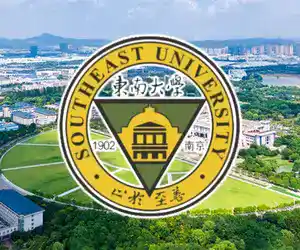
Southeast University (SEU), located in Nanjing, the ancient capital city of six dynasties, is a prestigious institution of higher learning renowned both at home and abroad. As one of the national key universities directly subordinate to the Ministry of Education of China and jointly established with Jiangsu Province, it is also listed as one of the universities involved in National “985 Project” “211 Project”. In 2017, SEU was ranked on the list of constructing “Class A first-rate world universities”.
SEU, as one of the time-honored institutions of higher learning in China with profound cultural heritage, its origin can be traced back to 1902 when it was founded as Sanjiang Normal College, then known as Liangjiang Normal College, Nanjing Higher Normal School, State Southeast University and State Central University, etc.. In 1952, national colleges and universities greatly adjusted their departments and disciplines by moving out the literature and science disciplines. Based on the College of Engineering of the original State Central University, relevant disciplines of Fudan University, Chiao Tung University, Zhejiang University and University of Nanking etc. were incorporated in succession to establish Nanjing Institute of Technology on the original site of State Central University. In May 1988, the university was renamed to Southeast University. In April 2000, a new Southeast University was established in combination with Nanjing Railway Medical College, Nanjing College of Communications and Nanjing Geological School. In the past 120-year school management, SEU, in the spirit of patriotism and concerning people all over the world, has been always making unyielding efforts in pursuit of prominence to achieve scientific progress and national rejuvenation. With time goes by, the school has gradually shaped its outstanding school spirit of “rigor, truthfulness, unity and diligence”, the school management philosophy of “being renowned for science and serving the country with talents”, and the school motto of “striving for perfection”.
Currently, SEU has set up 34 departments with 83 bachelor’s degree programs, 34 first-leveldisciplines authorized to confer PhD Degree and 48 first-level disciplines authorized to confer Master’s Degree. Among the full-time 36,277 students, there are 16,200 undergraduate students and 20,077 graduate students including 1,966 overseas students, among which, 1,523 study for different academic degrees. Right now, SEU has three campuses, respectively, Sipailou Campus, Jiulonghu Campus and Dingjiaqiao Campus, covering an area of 5888mu (1mu = 666.7 m2) in total, among which, Jiulonghu Campus covers an area of 3,752.35mu with the total building area of 789,700m2. The school’s library covers an area of 66,900m2, compromising 4.4 million volume of books of all sorts. In addition, the school has also set up Wuxi Branch and Suzhou Campus.
SEU is a comprehensive research-oriented university featuring engineering discipline while covering many other disciplines including philosophy, economics, law, education, literature, science, engineering, medicine, management and art, etc.. Among others, 11 disciplines have been listed as national “double first-class” construction disciplines and 5 disciplines obtain A+ in the fourth round of disciplinary assessment, both ranked at No. 8 at the national level; 12 disciplines are ranked among top 1% of ESI internationally, in which, the engineering discipline is listed at No. 20 with computer science at No. 16. Both disciplines are ranked among top 1‰ of ESI internationally. Meanwhile, the school highlights 3 national key laboratories, 4 national engineering research centers, 2 national engineering technology research centers, 1 national professional laboratory, 11 key laboratories of the Ministry of Education, 7 engineering research centers of the Ministry of Education, 33 postdoctoral research centers, 1 national-level think tank of liberal arts and 2 key high-end think tanks of Jiangsu Province.
SEU features high-level faculty comprising 2,991 full-time teachers, including 2,569 teachers with PhD degree, 2,021 teachers with senior andsub-senior titles, 1,071 doctoral student supervisors and 2,166 graduate student supervisors. In addition, there’re also 12 academicians of Chinese Academy of Sciences and Chinese Academy of Engineering, 1 academician of the Academy of Europe, 13 members of the 7th Disciplinary Appraisal Panels of the State Council Academic Committee, 37 experts involved in the national “Ten Thousands Talents Program”, 6 winners of the national awards for renowned teachers, 5 renowned teachers involved in the “Ten Thousands Talents Program”, 50 persons granted with funds from the National Outstanding Youth Science Foundation, 25 national-level candidates for “Millions of Talents Program” initiated by the Ministry of Personnel and 2 persons titled as “National Top 10 Youth Jurisconsults”. SEU is right now intensifying its strategy of building a powerful school by talents and endeavoring to promote the “high-end faculty multiplication plan” so as to accelerate its progress of constructing a top-ranking faculty team.
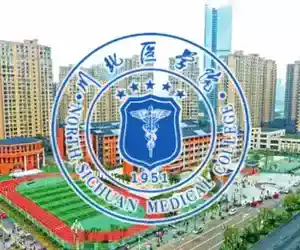
North Sichuan Medical University is a government-run college of medicine in Sichuan Province and is in the second largest higher education center of Sichuan Province — Nanchong, a famous city, the origin of the Three Kingdoms Culture. Its two campuses occupy an area of over 823,693 square meters.
NSMC has its national and international enrollment; its campuses enroll nearly 10,000 students in undergraduate and postgraduate programs.
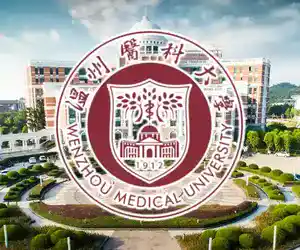
Wenzhou Medical University (WMU) is a higher institution under the administration of Zhejiang Provincial Government. It can trace its origin back to the former Zhejiang Specialized Medical School established in 1912. In August 1958, the Second Zhejiang Medical College was established in Wenzhou as a branch of Zhejiang Medical College, whose name was later changed to Wenzhou Medical College in accordance with its location. In 2013 Wenzhou Medical College was officially renamed Wenzhou Medical University. In 2015, WMU was shortlisted as one of the co-development universities by the Ministry of Education, National Health Commission and Zhejiang Provincial Government. In 2017, it became a Priority Development University in Zhejiang Province.
WMU started its five–year undergraduate programs in 1958 and master’s programs in 1978, making it one of the first institutions in China authorized to confer master’s degree, and later also authorized to confer doctoral degree. Now WMU has 4 Primary Category Discipline PhD Programs (Clinical Medicine, Basic Medicine Science, Pharmaceutical Science, Biomedical Engineering) and 2 professional doctorate program (Clinical Medicine, Medical Technology), 11 Primary Category Discipline Master Programs (Clinical Medicine, Nursing, Traditional Chinese Pharmacology, Biology, Biomedical Engineering, Basic Medical Sciences, Chinese and Western Integrative Medicine, Pharmaceutical Science, Stomatology, Public Health and Prevention Medicine, Public Management), 7 Professional Master’s Programs (Clinical Medicine, Biomedical Engineering, Stomatology, Nursing, Pharmaceutical Science, Public Health, Applied Psychology), and Postdoctoral Scientific Research Mobile Stations under the Primary Category Discipline of Clinical Medicine and Pharmaceutical Science. WMU ranks 70 in the ESI Chinese University ranking, with 10 disciplines, i.e. Clinical Medicine, Molecular Biology & Genetics, Pharmacology&Toxicology, Biology&Biochemistry, Materials Science, Neuroscience&Behavior, Chemistry, Immunology, Engineering, Environment/Ecology ranking in the top 1% of the world, among which Clinical Medicine and Pharmacology&Toxicology rank within the global top 1‰. WMU features 1 National Key Laboratory, 1 State Engineering Technology Research Center, 1 State Engineering Research Center of National Development and Reform Commission, 1 State Key Laboratory co-built by the Ministry of Education and Zhejiang Province, 1 National Research Center for Clinical Medicine (Ophthalmology Diseases), 2 Collaborative Innovation Centers jointly built by the Ministry of Education and Zhejiang Province, 1 Key Laboratory of the State Food and Drug Administration, 2 National International Science and Technology Cooperation Bases, 1 National TCM platform, 38 Provincial or Ministerial scientific research platforms, 2 Provincial Strong Characteristic Disciplines, 4 Provincial Level-A World-class Disciplines, 6 Level-B World-class Disciplines, 2 Strong Characteristic Disciplines of Provincial Key Universities, 2 Provincial Top Priority Disciplines and 10 Key Disciplines for Provincial Universities.
WMU takes to heart the needs of the people and society, and stays committed to the mission of educating healthcare professionals of excellence, those that operate with confidence and vision and strive to achieve and innovate. WMU offers 30 undergraduate programs, 2 "5+3" integrated programs and 1 Chinese-foreign education cooperation program in clinical medicine. At present, the total enrollment of WMU amounts to 24,809 (exclude Wenzhou Medical University Renji College), including 8,121 postgraduate students (841 doctorate students), 648 international students, covering a full range of programs that include bachelor’s and master’s degrees, doctoral and postdoctoral studies, from full-time education to continuing education programs, with students not only from mainland China but also overseas and Hong Kong, Macao and Taiwan. As the quality of education improves steadily, WMU graduates from Clinical Medicine Program have consistently ranked within top 10% nationwide in terms of their passing rate of National qualification examination for medical practitioners. According to the latest data from the Provincial Education Examination Institute, WMU ranks the first among the undergraduate colleges and universities in Zhejiang Province in terms of professional development and training quality of the graduate of the class 2021 as well as the employability and competitiveness of graduate of the class of 2019 three years after graduation, with 27 index ranking first.
WMU has more than 15,000 faculty and staff, including academic appointments of the affiliated hospitals, and over 1,800 of them hold senior professional titles. The main campus of the university has 1,820 full time teachers, of which 476 have senior professional and technical positions, 597 have associate senior professional and technical positions, and 1,475 have doctoral degrees. WMU has 1 academician of the Chinese Academy of Engineering, 1 academician of the Canadian Academy of Health Sciences, 3 winners of the National Science Fund for Distinguished Young Scholars. Many excellent talents were selected in the National Ten Thousand Talents Plan, and as the Young and Middle-Aged Leading Talents in Science and Technology Innovation by the Ministry of Science and Technology, Provincial Super Experts; teachers won the National Scientific and Technological Progress Awards, Guanghua Engineering Science and Technology Prize, Science and Technology Prizes of the Ho Leung Ho Lee Foundation, and were honored as National Outstanding Teachers, National Moral Models, National March Eighth Red Flag Bearer, etc. WMU also has 1 Innovation Team of Ministry of Education, 1 National Higher Education Team of Huang Danian Style, 2 Innovation and Talents-Introduction Bases in Higher Education of the Ministry of Science and Technology (111 Base). WMU was also awarded as the Provincial Advanced Units for valuing talents.
WMU has 18 national first-class undergraduate major construction sites, 4 national featured major construction sites, 1 pilot project of national comprehensive reform on disciplines, 5 Pilot programs of Excellent Doctor Education and Training Plan of Ministry of Education, 1 national innovation experimental zone for talent training, 2 national experimental teaching demonstration centers, 1 national practice base, 1 National Clinical Teaching and Training Demonstration Center, 2 National Virtual Simulation Experimental Teaching Center; 23 national first-class courses, 5 national excellent resource-sharing courses, 1 national bilingual demonstration course, 2 national brand courses of English teaching for international students, 1 of the first demonstration courses of the Ministry of Education of ideological and political teaching, 1 textbook (editor-in-chief), which was rewarded with the second prize for the first National Excellent Textbooks, and 1 national advanced group for textbook construction; 2 piof the first pilot program of the national virtual teaching and research office, 2 national faculty teams, 3 national teaching masters, 1 teaching team of the Ministry of Education of ideological and political teaching, 1 teaching master of the Ministry of Education of ideological and political teaching, and 7 second prizes of national teaching awards (as the main organizer) and 1 first prize (as the second participating institution).
In recent years, WMU has undertaken more than 1,600 scientific research projects of National level. More than 190 projects have won provincial, ministerial or national prizes, including 1 first prize of State Technological Invention Award, 5 second prizes of State Technological Invention Award, 2 second prizes of National Award for Technological Invention, 1 first prize and 3 second prizes of Technology Award of Ministry of Education, 5 first prizes of Chinese Medical Science and Technology Award, 1 first prize of Chinese Pharmaceutical Association Science and Technology Award, 1 major contribution award of Zhejiang Province Science and Technology Major Progress, 17 first prizes of Zhejiang Science and Technology Award, 1 first prize, 1 second prize and 1 third prize of Human and Social Science Award of Ministry of Education, 2 second prize for Outstanding Outcome Award in Education and Research and 19 prizes of Zhejiang Philosophical and Social Science Award.
Wenzhou Medical University embraces internationalization in the course of its development. It has established partnerships with 32 countries (regions) of more than 170 education and research institutions, including more than 20 universities that rank top 100 worldwide, collaborating in the areas of overseas student exchange and joint education programs, faculty academic exchanges and research cooperation, Chinese-foreign Cooperation in Running Schools, international students education programs, etc. WMU has established Chinese-foreign Cooperation in Running Schools, i.e. the Foreign Doctor Degree Project in MS/OD in Optometry & Ophthalmology between WMU and The New England College of Optometry USA, Chinese, Joint PhD Program Leading to a Double PhD Degree (JDP) in Clinical and Translational Medicine between WMU and Lund University, Collaboration program in Master of Nursing Science Degree Between WMU and Burapha University, Thailand, Collaboration in Doctor of Philosophy Degree in Pharmacy Between WMU and Chonnam National University, Korea, among which two are listed as demonstration projects in Zhejiang Province. WMU and the University of Alberta, one of the top 100 universities in the world, co-established the Alberta Institute, Wenzhou Medical University, which is currently the highest level of Chinese-foreign cooperation in running medical schools in China. In cooperation with Medical University of Lublin, Poland, we established the Hua Tuo joint education program as the first joint education program in medical science between China and Poland, and it is also China's first overseas clinical medical education project. And WMU co-established Confucius Institutes with Burapha University in Thailand and State University of New York respectively. WMU has also been approved by the Ministry of Education for the first "Chinese+Medicine" Program with SUNY College of Optometry. WMU was selected as the implementation institution of the “Program of Study Abroad for Young Scholar” sponsored by the China Scholarship Council, and the first batch of “Internationalized Universities of Zhejiang Province”.
Composed of three campuses, WMU covers a total area of 1,436 mu. The university library has a collection of 2.08 million volumes of papar literature and 99,000 volumes of digital literature. WMU publishes 5 academic Journals and 1 academic newspaper, among which Eye and Vision is listed in SCIE academic journal and 3 journals are listed as China science and technology core journals. In addition, the Chinese Journal of Optometry & Ophthalmology and Visual Science, is listed as one of Chinese Medical Association Journals. WMU has 5 affiliated hospitals, among which four are ranked as Level A Tertiary. WMU also has 29 non-directly affiliated teaching hospitals across the province. The Eye Hospital, the First Affiliated Hospital and the Second Affiliated Hospital are among the top 100 hospitals selected by Chinese Academy of Medicine based on their technology impact. The Affiliated Eye Hospital ranked 1st among eye hospitals nationwide.
Guided by the motto that stresses "Compassion, Reverence, Diligence, Modesty, Make Efforts and Seek Truth", WMU has been pursuing excellence through its unique strength and university culture, as well as the potential of its people. WMU is on a steady march towards comprehensive development that is propelled and guided by its programs of excellence. It seeks progress through internationalization, and strives to serve the regional social and economic development using its strength in healthcare service and capacity in bringing together the government, academy and business sectors. In 2023, WMU’s comprehensive strength is ranked 93 among Chinese universities in Wushulian Chinese University Rankings.
Wenzhou Medical University seeks to establish itself as a leading educational and research university deserving of international recognition and an institution emphasizing undergraduate medical education while vigorously developing graduate programs of the highest standard, maintaining medical disciplines as its core while promoting multi-disciplinary programs; and aspiring to serve the community and China as a whole with a global vision.
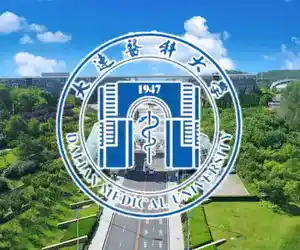
Dalian Medical University which is more popularly known as DMU by the students is a public university that was established in the year 1947 in Liaoning, China. But the university has moved to a new campus in the year 2007 which is located at Lushunkou District in Dalian. Dalian Medical University is one of the most preferred destinations of MBBS in China. Since the time of inception of the university, it emerged as one of the top destinations for China MBBS which can be clearly understood from the increasing number of enrolments of medical study in China.The university is one of the most sought after MBBS abroad destinations because of its low cost MBBS fees, advanced teaching methodology along with some of the sophisticated hospitals for internship.
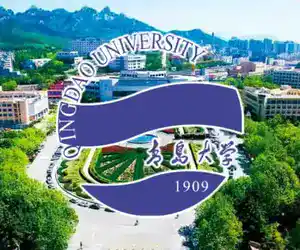
Qingdao University, situated in the historical and cultural city of Qingdao, is imbued with a profound traditional culture and the spirit of the present. It nestles below Fushan Mountain and faces the Yellow Sea.
Its predecessor is Qingdao Specialized Institute of Higher Learning founded in 1909. The institute, unique in medical education, underwent various stages as Qingdao Medical School, Qingdao Medical University, and Qingdao Medical Specialized School.
Another historical source of Qingdao University is Private Qingdao University, established in 1924 and then named as National Qingdao University and National Shandong University. In 1946, National Shandong University merged with Qingdao Medical Specialized School, resulting in the establishment of the Medical School, which was later separated from Shandong University in 1956 and became Qingdao Medical School. Shandong University moved to Ji’nan in 1958, and Qingdao University started its reconstruction in 1985.
Qingdao Textile Technical School, established in 1950, was renamed Shandong Textile Engineering Institute in 1978, after two periods as Qingdao Textile Vocational School and then Shandong Textile Industry School.
Qingdao Teachers Training College, founded in 1951, underwent different phases as Qingdao Work-study Teachers College and Qingdao Normal College, and was renamed Qingdao Teachers College in 1981.
In 1993, Qingdao University, Qingdao Medical College, Shandong Textile Engineering College, and Qingdao Teachers College merged into the new Qingdao University, which then stepped into a new stage of development at a fresh starting point while inheriting fine traditions.
Distinctive disciplines originating from different periods are integrated into today’s Qingdao University, which, like a mighty river joined by meandering tributaries, surges forward with high hopes of the nation and for the future.
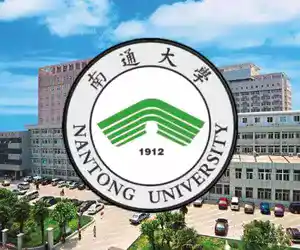
Nantong University was founded in 1912. It originated from the private Nantong Medical Specialized School and Nantong Textile Specialized School founded by Zhang Jian, a famous modern industrialist and educator. In 2004, the former Nantong Medical College, Nantong Institute of Technology and Nantong Normal College merged to form a new Nantong University. In China University Evaluation 2022 of the China Academy of Management Science, Nantong University ranked 106th. In ESI Comprehensive ranking of Chinese universities, it ranked 114th.
There are 20 schools, one independent college, one affiliated Hospital of Nantong University, School of International Education, and School of Continuing Education in the university. There are 3 postdoctoral research stations of basic medicine ,clinical medicine and information and communication engineering, 5 first-level doctoral programs of basic medicine, clinical medicine, information and communication engineering, Public Health and Preventive Medicine, Special Medicine, 23 first-level master degree programs, and 19 professional master degree programs. 6 disciplines of Clinical medicine, neuroscience and behavioral science, engineering, Pharmacology & Toxicology, Biology and Biochemistry, and Chemistry entered the top 1% of ESI global ranking of disciplines.
There are 3.435 faculty members in the university currently, including 1,779 with senior and higher titles, and more than 1,610 doctoral and master tutors. There are 105 undergraduate programs, covering 10 disciplines of literature, science, engineering, medicine, art, economics, law, pedagogy, history and management, etc. There are nearly 40,000 full-time undergraduates, more than 4,350 postgraduates and 1008 overseas students. The average annual employment rate of students keeps above 98%.
The university has a number of high-end research platforms, such as the National-local Joint Engineering Research Center, the Key Laboratory of the Ministry of Education, the Key Laboratory of Sinopec, the Provincial Key Laboratory and Engineering Center, the Cooperative Innovation Center of Jiangsu Universities and the Key Research Base of Philosophy and Social Sciences of Provincial Universities. Over the past five years, it has undertaken nearly 600 projects of National Key Research and Development Projects, Project of National Natural Science and Social Science Foundation.
The university has extensively carried out overseas exchanges and cooperation. It has established friendly cooperative relations with 127 universities and research institutes in the countries of United States, Canada, Britain, Germany, France, Italy, Russia, Australia, Japan, Korea, and Chinese regions of Hong Kong, Macao and Taiwan.
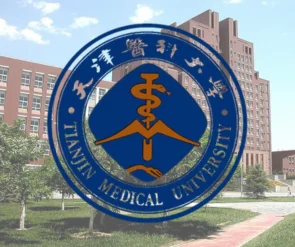
Tianjin Medical University is a public medical university in Tianjin, China. It is affiliated with the City of Tianjin, and co-funded by the Tianjin Municipal People's Government, the National Health Commission, and the Ministry of Education.
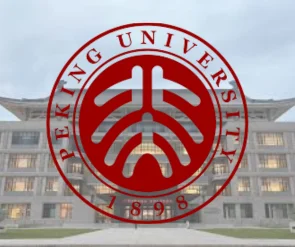
Peking University is a public university in Haidian, Beijing, China. It is affiliated with and funded by the Ministry of Education of China. The university is part of Project 211, Project 985, and the Double First-Class Construction. It is also a member in the C9 League
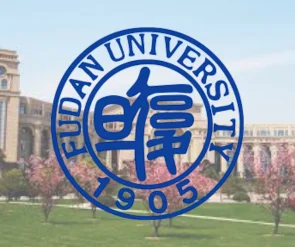
Fudan University is a public university in Yangpu, Shanghai, China. It is affiliated with the Ministry of Education and is co-funded with the Shanghai Municipal Government. The university is part of Project 211, Project 985, and the Double First-Class Construction.
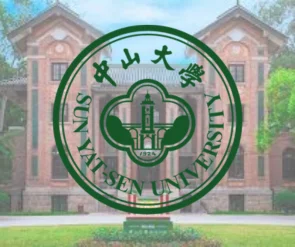
Sun Yat-sen University is a public university in Guangzhou, Guangdong, China. It is affiliated with the Ministry of Education, and co-funded by the Ministry of Education, SASTIND, and Guangdong Provincial Government.
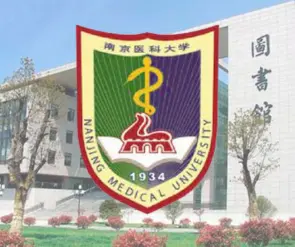
Nanjing Medical University is a provincial public university in Nanjing, Jiangsu, China. It is affiliated with the Province of Jiangsu. The university is part of the Double First-Class Construction. The school was originally established in 1934 in Zhenjiang, but subsequently relocated to Nanjing in 1957
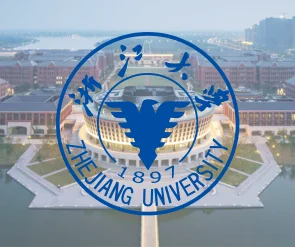
Zhejiang University is a public research university in Hangzhou, Zhejiang, China. It is affiliated with the Ministry of Education. The university is part of Project 211, Project 985, and Double First-Class Construction.
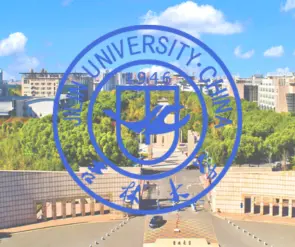
Jilin University is a public university in the city of Changchun, Jilin, China. It is affiliated with the Ministry of Education. The university is part of Project 211, Project 985, and the Double First-Class Construction.
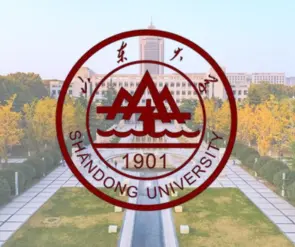
Shandong University is a public university in Jinan, Shandong, China. It is affiliated with the Ministry of Education of China. The university is part of Project 211, Project 985, and the Double First-Class Construction
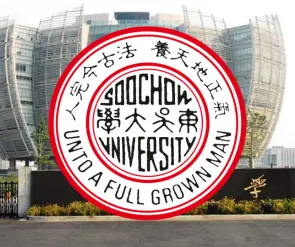
Soochow University, founded in 1900 in Suzhou, was the first western-style university in China and the first private university in Taiwan.
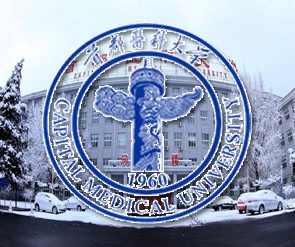
Capital Medical University is a municipal public university in Beijing, China. It is affiliated with the City of Beijing, and co-funded by the Beijing Municipal People's Government, the National Health Commission, and the Ministry of Education. The university was founded in 1960 as the Beijing Second Medical College.
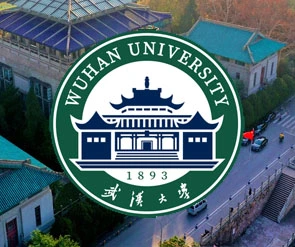
Wuhan University is a public university in Wuhan, Hubei, China. It is affiliated with and funded by the Ministry of Education of China. The university is part of Project 985, Project 211, and Double First-Class Construction
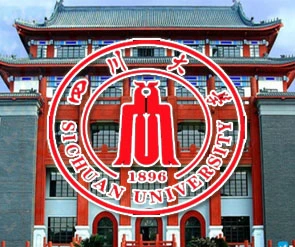
Sichuan University is a public university in Chengdu, Sichuan, China. The university is affiliated with and funded by the Ministry of Education. The university is part of Project 211, Project 985, and the Double First-Class Construction
Select Counselor profiles below to initiate chat. They're here to assist you on your educational journey. Let's get started!